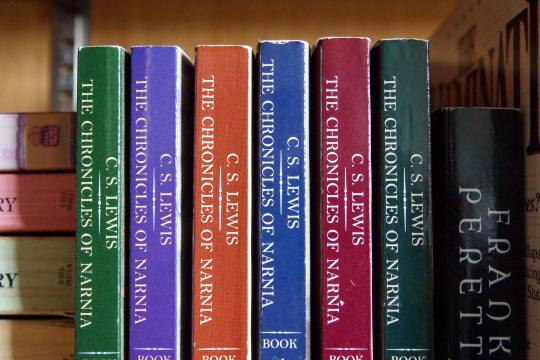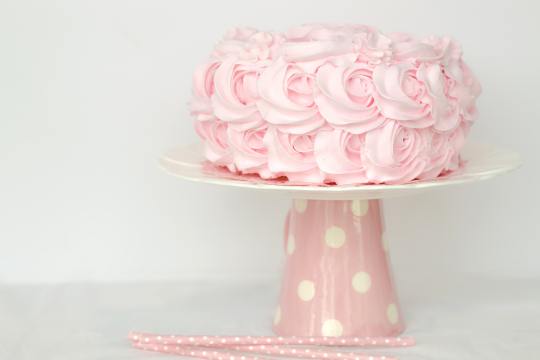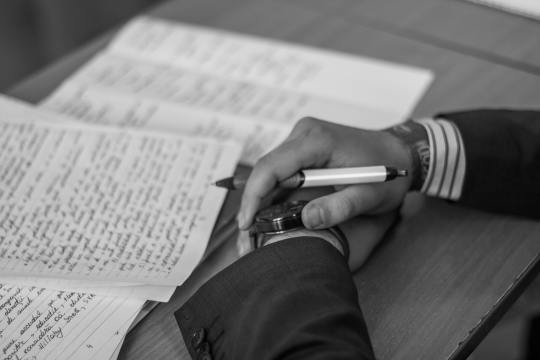Don't wanna be here? Send us removal request.
Text
Welcome to our Blog!
The Writing Studio at Concordia University Irvine is proud to present our blog: a space for students, faculty, and staff to share perspectives on writing and the writing process. Here, you’ll find information about writing workshops and events, insights from our writing consultants, tips about writing from faculty across campus, and more!
0 notes
Text
A Delicious Lesson on Integrating Quotes
By Kellie Moore, OWL Consultant

Photo by Georgie Devlin: https://www.pexels.com/photo/chocolate-chip-cookies-on-wooden-table-11154962/
Think of the perfect chocolate chip cookie. The top is golden-brown. The cookie is soft, but not underbaked. The chocolate chips are distributed throughout, giving you a hint of chocolatey goodness in every bite and blending beautifully with the dough.
One crucial step in baking chocolate chip cookies is stirring the chocolate chips into the batter until they are fully incorporated. Imagine what would happen if the baker simply dropped a heaping cup of chocolate chips into the bowl and scooped out spoonfuls of dough without stirring. Some cookies would have no chocolate chips, and others could hardly be called cookies because they’d be nothing but chocolate chips. What a mess!
Just as chocolate chips are an essential ingredient in chocolate chip cookies, well-chosen quotations are an essential ingredient in research papers. But simply having the quotes isn’t enough. They need to be properly incorporated, like chocolate chips in cookie dough.
One common mistake we see a lot at the Writing Studio is the use of dropped quotes. A dropped quote is a quotation that is placed into a paper as its own sentence without being fully integrated into the surrounding text. A dropped quote hasn’t been stirred in.
Below is an example, with the dropped quote in bold. In all my examples, I’m using APA style for my citations, but the ideas apply regardless of which format you’re using.
In The Kindness Challenge, author and researcher Shaunti Feldhahn (2016) took a close look at the transformational power of kindness. “It changes you, not just others. It melts hardness and makes gentleness immensely powerful” (Feldhahn 2016, p. 17). She provided insight on day-to-day practices readers could try and apply to any relationship, whether with a spouse, a relative, or a difficult co-worker.
At first, it might look correct. After all, the quotation marks and parenthetical citation are present, and the quote is relevant to the paragraph. Even so, the quote is not fully incorporated. There’s nothing introducing it. It has simply been “dropped” in—not stirred.
Thankfully, fixing this common error is simple. There are a few easy options.
One option is to add a signal phrase, like according to Feldhahn (2016), or Feldhahn (2016) wrote. These and other phrases (i.e., so-and-so described/claimed/found) signal to the reader that a quotation is coming. Here’s a corrected version of the same paragraph:
In The Kindness Challenge, author and researcher Shaunti Feldhahn (2016) took a close look at the transformational power of kindness. Feldhahn (2016) explained, “It changes you, not just others. It melts hardness and makes gentleness immensely powerful” (p. 17). She provided insight on day-to-day practices readers could try and apply to any relationship, whether with a spouse, a relative, or a difficult co-worker.
Another option is to use the previous sentence as an introduction, and end it with a colon rather than a period. The key here is to make sure that the sentence and the quote are very closely related before you use the colon to join them. The transition needs to be smooth and logical, not jarring. Keep in mind that this strategy can lead to some very long sentences, which may lead to confusion if you’re dealing with particularly difficult subject matter or hard-to-read authors. In this case, it would work:
In The Kindness Challenge, author and researcher Shaunti Feldhahn (2016) took a close look at the transformational power of kindness: “It changes you, not just others. It melts hardness and makes gentleness immensely powerful” (p. 17). She provided insight on day-to-day practices readers could try and apply to any relationship, whether with a spouse, a relative, or a difficult co-worker.
Another way to fix dropped quotes is to blend the quoted material into a sentence by using carefully selected words or phrases rather than the full quote.
In The Kindness Challenge, author and researcher Shaunti Feldhahn (2016) took a close look at the transformational power of kindness. Feldhahn (2016) explained that kindness “changes you,” and that it “melts hardness and makes gentleness immensely powerful” (p. 17). She provided insight on day-to-day practices readers could try and apply to any relationship, whether with a spouse, a relative, or a difficult co-worker.
Keep in mind that it’s a good idea to use a variety of approaches as you integrate your quotes. A little bit of variety will create a smoother, more interesting reading experience than using “According to Source” or “As Source said” every single time. As the writer, you get to choose which strategy will work best with each new quotation you stir in. It’s sort of like choosing whether you’re going to stir in the chocolate chips with a wooden spoon, a silicone spatula, or a stand mixer—they all get the job done, just in slightly different ways.
Along with properly introducing each quote, it’s important to pay attention to what comes after. A common problem that accompanies dropped quotes is a lack of further explanation. Sometimes, the quote is dropped at the end of the paragraph, leaving the paragraph without a concluding thought or transition. Other times, the quote is in the middle of the paragraph, but the writer moves on to the next idea without any kind of reflection or further context. The quote doesn’t “stick” to the material around it.
To fix this post-quote problem, add a sentence or two of explanation. Keep in mind that the explanation doesn’t have to be long to be effective. In the examples above, all it took was one sentence: She provided insight on day-to-day practices readers could try and apply to any relationship, whether with a spouse, a relative, or a difficult co-worker. The sentence was not a recap of the quote, but instead built on the quote with further information, which allowed the writer to transition to the next idea. Think of it like stirring thoroughly to ensure that the chocolate chips are completely incorporated throughout the dough.
Here’s an example of a dropped quote that needs to be corrected—see if you can identify what needs to change. (Hint: There are two things the writer needs to do.)
One behavior that often gets in the way of practicing kindness is speaking negatively about others. Feldhahn (2016) argued that avoiding negative comments about others is an important step in treating them with kindness, and ultimately, improving the relationship. “You will find that as you gain the new habit of nixing the negativity, something remarkable happens. You will have a lighter heart, greater peace, and much more enjoyment of your life and relationships” (Feldhahn 2016, p 63). The 30-day kindness challenge created by Feldhahn (2016) includes one specific, easily attainable action item for every day of the month.
Do you see what’s missing? That’s right—the quote isn’t introduced. There’s also no explanation after the quote. The writer moves on to the next idea without creating a smooth transition, making the ideas in the paragraph hard to follow. The paragraph is choppy and disjointed. Let’s fix it by introducing the quote and adding a bit of explanation after:
One behavior that often gets in the way of practicing kindness is speaking negatively about others. Feldhahn (2016) argued that avoiding negative comments about others is an important step in treating them with kindness, and ultimately, improving the relationship. According to Feldhahn (2016), “nixing the negativity” leads to having “a lighter heart, greater peace, and much more enjoyment of your life and relationships” (p. 63). This concept is so important that it’s one of three foundational components of her 30-day kindness challenge.
That last sentence provides further context for the quote, and it helps move the paper forward, easing the writer toward the next idea. A little bit of extra stirring can make a delicious difference.
References
Feldhahn, S. (2016). The kindness challenge: Thirty days to improve any relationship. WaterBrook.
***
Kellie Moore graduated from CUI in 2010 with a B.A. in English and a minor in creative writing. She worked in the Writing Studio for two years as an undergrad, and she is delighted to be part of the Online Writing Lab team. At CUI, Kellie fell in love with journalism through her work as an editor of The Concordia Courier. She went on to earn a master’s degree from the Missouri School of Journalism. Since then, she’s managed a religion news website, taught high school English, and worked as a copy editor. She also had the joy of being an editor at Verily magazine, where she was a contributing writer. Now, she’s a stay-at-home mom and freelance writer/editor. She lives in Utah with her husband, their two kids, and two cats.
0 notes
Text
Do We Write the Way We Talk? Thoughts on Tone
By Livia Swan, Writing Studio Consultant

Well, I’m going to write the way I talk for this blog post. The decision to write the way you talk, or your choice of tone, depends on the context and purpose of the piece you are writing. Right here and now, my purpose is to reflect on the wide mysteries of our secret motives and natural instincts involved in expressing ourselves through writing. That means that you, the reader, are experiencing my thoughts as they surface in my head, without a whole lot of filtering. This isn’t normal for most academic writing, though. More on this in a little bit. Now I’m going to give you the “thesis” of sorts for this post: Your audience combined with your purpose determines the most appropriate tone for your writing.
First! The audience. The person or group of people that you expect will read your writing could change your mind about the tone you use (or, whether your writing voice resembles your talking voice). Your audience could be your friends, your professors, a room full of classmates, or your grandma. You already know that when you write a card to your grandma for her birthday, you’ll be using a different tone than when you write your best friend a birthday card. You might not be formal with your grandma, but you might at least use more proper language in her card and let yourself be more effusive with your language in your best friend’s card. In your grandma’s card, you’re less likely to write the way you normally talk than in your best friend’s card. (Unless, as my friend pointed out, your best friend is your grandma. If this is the case, congratulations. You win.) The purpose is the same, but because your audience is different, your written tone changes. It’s natural and appropriate for this to happen.
You can use your speaking tendencies to intuitively decide how you should write to your audience. Think about it this way: you would also probably use different language to talk to your grandma about, say, your day at school than you would if you were talking to your best friend. Your tone changes in speech just as it does in writing (linguistics calls this your register). So, one tip for deciding on a tone for a written piece is to ask yourself how you would talk in real life to the people that comprise your audience. In that sense, writing the way you talk can help you decide on your tone.
Secondly, the purpose of your writing can change your tone. If you’re making an argument in a paper that your professor will read, you’re more likely to use formal, overtly academic words that you don’t typically use when you speak. But if you’re writing a short reflection essay for your professor, you might slip into a more natural tone that is closer to your speaking voice. In this example, the audience is the same, but the purpose of your writing changes your tone. Considering your audience and your purpose together helps you make an informed choice of tone.
PLEASE DO NOT MISTAKE ME. “Overtly academic” does not mean using words that make you sound like Archibald from Veggie Tales. Stuffiness does not equate to cleverness, but clarity is closer. All I mean to say is that academic writing requests that you use some specialized terms that may not be part of your everyday vocabulary. In your efforts to achieve an “academic tone,” don’t waste your good thoughts on thesaurized words and tangled sentence structures. Preserve them. Communicate them clearly.
Let’s look at a couple of examples from the introduction of this blog post that show what my choice of tone is. I told you already that you’re experiencing my thoughts, and that I’m writing the way I would talk to you. My audience is you, my fellow writer and peer. That means I can afford to have a friendly tone. I use personal pronouns to establish this, like “I” and “you,” and I address you directly. My purpose, which I already stated, is to reflect on some thoughts about tone in writing. Since these are my thoughts as they appear in my head, not all of them are complete sentences. For example, in the first paragraph I wrote,“More on this in a little bit” as a fragment. I also used informal language like “of sorts” and “a whole lot.” Informal language, fragmented sentences, and personal pronouns combine to create a conversational tone. That is appropriate for this blog post, because of the context I am writing in (my audience and purpose).
These elements aren’t appropriate choices for an academic paper, though. If I wrote my next research paper with fragments, personal pronouns, and phrases like “a whole lot,” my professor would probably dock me for incorrect grammar, wordiness, and he or she might think I wasn’t taking the assignment very seriously. Because the context changes, my tone also needs to change to fit the situation. I would need to use complete sentences that related logically to each other, eliminate personal pronouns, and choose words that were concise instead of vague (how are you supposed to know how much “a whole lot” is?). Those stylistic choices create a respectable, academic tone that professors are more likely to appreciate in a research paper.
Next time you write a paper, consider your context. Who are you writing to? How would you talk to them? What are you writing to them for? Use your answers to these questions to choose an appropriate tone. You can find more tips for choosing and accomplishing a suitable tone in this article from Walden University, and this one from Pressbooks.com.
Remember that this is a decision! Whether or not it is a conscious one, you make a choice about the tone of your writing. You are the writer. Recognizing your audience and your purpose and how they combine will help you intentionally choose an appropriate tone to use in conveying your ideas. This makes you an effective writer, attentive to your audience and firm in your purpose.
***
Livia Swan is from just about everywhere, but she spent most of her childhood in Singapore. She is studying to be a Spanish teacher because she loves language -- that’s also why she’s at the Writing Studio. There are a multitude of ways to use words to articulate one idea, even just within English. She is excited to read your ideas and help you represent your mind on the page so that your reader understands exactly the same thought that you mean to write down. When she’s not writing or reading (which, to be honest, isn’t very often), she’s baking or knitting or otherwise behaving like a grandma, and spending time with her best friends. She can’t wait to meet you! She’d love to learn how you use words and help you use them well.
0 notes
Text
Why Wikipedia Gets a Bad Rap
By Livia Swan, Writing Studio Consultant

A Wikipedia article is always the first to shoot up its hand with the answer when you search a question or a term on Google. Unfortunately, you and I know that we always have to scroll past it. Or do we? Wikipedia articles are fantastic for students. Most of them are relatively easy to read, they include a broad range of general information on almost every topic, and they’re free to access! The idea that Wikipedia is off-limits for students is a common misconception, and I’m here to tell you 1) how that misconception came about, 2) why it’s incorrect, and 3) how you can use Wikipedia for your research.
1. The misconception. Wikipedia was begun as part of a movement to make knowledge more accessible to the general public. Most other journals and encyclopedias require a paid subscription to read, but Wikipedia articles are free. In order for it to be a sustainable program, the labor for producing Wikipedia’s articles also had to be free. Volunteers write, rewrite, monitor, edit, and share articles as a collaborative effort. This is probably the reason you (along with the general public) think Wikipedia is off-limits when it comes to serious research. If anyone can edit an article, who’s to say they’re giving you the right information?
2. The mistake. In a 2005 study, Jim Giles found that Wikipedia articles had only one more inaccuracy per article than the Encyclopaedia Britannica, out of 42 evaluated science articles. This shows that Wikipedia has comparable accuracy to one of the most prestigious encyclopedias. As Jemielniak Dariusz argues, Frequent freelance editing from anyone means that inaccuracies are quickly found and easily corrected -- much more easily than for a formally established encyclopedia. So, if Wikipedia is a credible source, why shouldn’t students use it for their research?
Some risks associated with using Wikipedia are bias, readability, and plagiarism. Each author of an article has a different agenda in mind as they write, and they write with varying degrees of clarity, which can affect how easily people understand the information. By some twist of fate (probably related to its ease of access), it fell to Wikipedia to be one of the most frequently plagiarized sources by students, so academics have developed a certain personal sense of animosity towards it. But, that isn’t Wikipedia’s fault, and these risks are associated with any source of information.
Actually, one common reason that professors ask you to exclude Wikipedia from your references page is that it is universally frowned upon to cite any encyclopedia in a research paper. Professors want students to gather and analyze narrow, specific, relevant information about their topics. Encyclopedias, including Wikipedia, are really only good for learning general information.
3. Mastering Wikipedia. Precisely because of its generalized information, though, Wikipedia can still serve you well. You can (and should!) use Wikipedia in prewriting stages to solidify your basic understanding of your subject. Wikipedia articles can also be a great resource for you to find subtopics to research in specific later. For example, in some of my recent research, I started researching by reading a Wikipedia biography of the author I had to write about. Since the article gave a broad overview of the author’s life, I had my choice of several directions in which I could go to narrow my research. I ended up clicking on some cross-referenced links to read about the philosophers that influenced that author, and focusing my essay around the author’s use of their ideas. Think of it as if the Wikipedia article is a signpost with many arrows -- not there to confuse you, but to give you options!
Once you’ve found some specific topics to explore more deeply, Wikipedia’s citations with hyperlinks at the bottom of every article can fast-track you to those academic research articles that your professors want you to use. Ingrid Beckman, a previous Writing Studio consultant, has written a separate Voice Paint article on how to use these hyperlinks.
Wikipedia has an unjustified bad reputation -- its information is more reliable than you might think. But since the academic world at large is unlikely to change its opinion just because some of us have figured that out, and since Wikipedia is too general for the type of research you need to write well, don’t use it as a primary source of information for your research projects. Instead, read the Wikipedia article on your subject to learn the basics as preliminary research. Find subtopics within the article to hunt down more information on at the library or in databases. Snatch those hyperlinks that are there for your benefit! Then go forth with your good ideas. Research well, and write well.
***
Livia Swan is from just about everywhere, but she spent most of her childhood in Singapore. She is studying to be a Spanish teacher because she loves language -- that’s also why she’s at the Writing Studio. There are a multitude of ways to use words to articulate one idea, even just within English. She is excited to read your ideas and help you represent your mind on the page so that your reader understands exactly the same thought that you mean to write down. When she’s not writing or reading (which, to be honest, isn’t very often), she’s baking or knitting or otherwise behaving like a grandma, and spending time with her best friends. She can’t wait to meet you! She’d love to learn how you use words and help you use them well.
0 notes
Text
Death by Due Date: Ten Steps for Writing a Paper When You’re Short on Time
By Rachel Tillman, Writing Studio Consultant

Photo by PNW Production from Pexels
We’ve all done the last-minute shuffle of doom. Whether it’s working three jobs or just not vibing with productivity, it’s far too easy to suddenly realize that all the papers you thought you had plenty of time to work on are due simultaneously. If this situation sounds familiar, you’ve come to the “write” place!
I’m going to go ahead and assume you’re on a time crunch, so I’ll skip the whole “planning ahead would have helped you avoid this” lecture because 1) sometimes life just happens and 2) you already know this. What you need to know is what to do next.
For a 6-8 page research paper, the ten-step process I describe below takes me (an undergraduate senior with chronic health issues) about four hours to complete. However, your familiarity with researching, writing, and the page requirements of your prompt will affect the estimated time this process might take, so please adjust your expectations accordingly.
Step One: Spend 20-40 Minutes Selecting and Researching a Topic
One of the hardest things in the writing process is deciding what to write about. Conquer this challenging step by looking at the prompt, narrowing your field of possible topics based on your current knowledge and interests, and doing a Google Scholar search on up to three different topic options. The one that has the most articles/books easily found is probably going to be your best bet to form a coherent thesis. After you have a general topic direction, spend about 20 minutes online (or up to 40 minutes in a library) gathering sources, writing down quotes (and where you got them!) in a Google or Word Doc, and summarizing general themes you find on the topic as a whole. This will help you avoid plagiarism down the line and give you a general idea of what you’re going to write about.
Additionally, if you are having a lot of difficulty with topic selection, narrowing, or research, here are some resources that go more in-depth:
https://libraries.indiana.edu/sites/default/files/Reading_Scholarly_Articles.pdf
https://writingcenter.unc.edu/tips-and-tools/evidence/
https://writingcenter.unc.edu/tips-and-tools/understanding-assignments-demo/
https://ggu.libguides.com/c.php?g=106905&p=694002
Step Two: Set a Timer and Start Brainstorming
Get out a physical piece of paper, a whiteboard, or another blank slate medium of your preference. Write out the prompt or the research question. Then, set a timer for no more than 15 minutes and make a brainstorm bubble map (or another brainstorming outline that works for you). In your map, fill in what connections you’ve made, the resources you want to include, and any general direction you want/need the paper to go.
If you are stuck and don’t know which method of brainstorming to choose, here are some additional resources that break down the different types and how to use them:
https://writingcenter.unc.edu/tips-and-tools/brainstorming/
https://www.youtube.com/watch?v=cNLN0Ws8pJs
Step Three: Take a 5-10 Minute Break
For real though, take a breather. Although this may seem counterintuitive, taking a break after mapping out all your thoughts will help this process feel less overwhelming and give you some time and distance from any potentially tangled thoughts. During an approximately 5-10 minute breather (any longer risks the dangerous realm of procrastination), drink some water, eat a carrot, dance to a song, use the restroom; basically, do something to nourish you as a human.
Step Four: Spend 20 Minutes Constructing a Thesis
Once again, grab yourself a timer and set it for 20 minutes. Then, on a new piece of paper (whiteboard, etc.), write down possible thesis statements (shoot for no fewer than three and no more than seven) related to the prompt and general ideas you have laid out in your brainstorming map. If you’re stuck on how to structure your thesis, this article from The University of North Carolina at Chapel Hill’s Writing Center is a great place to start: https://writingcenter.unc.edu/tips-and-tools/thesis-statements/
Step Five: Give Yourself 30-45 Minutes to Create an Outline
Alrighty, this part might be a bit tricky, but you’re halfway there, and after you’re done with this step, you get a long break! To outline, focus on your overall argument (thesis statement) and the categories that you want to use to support that thesis in your paper. These categories can be extrapolated into multiple subpoints (which will become paragraphs) depending on the prompt, so if you need to make a page count, these sections will become your best friends.
If outlining still feels overwhelming or if you’re not sure where to start, these resources do a fantastic job outlining what an outline is and what it should look like:
https://writingcenter.unc.edu/tips-and-tools/outlines-demo/
https://slc.berkeley.edu/writing-worksheets-and-other-writing-resources/how-outline
https://writingcenter.fas.harvard.edu/pages/outlining
Step Six: Take an Hour-Long Break!
Eat a real meal. Go on a walk. Take a nap for an hour. Snag coffee (or tea) with a friend. Do something to take care of yourself. In the moments when you feel you absolutely cannot afford to take a break, you need to take one. It’s better for you to turn in something that would have been mildly better after an hour’s more work than to burn yourself out for the sake of refinement. You are a human, and at this point, the goal is good structure and completeness; it will not be your Mona Lisa, so try not to go down the da Vinci rabbit hole.
Step Seven: Spend 20-30 Minutes on Writing Topic Sentences and Transitions
Welcome back! For this step, you will need to revisit that outline you made and roughly write topic sentences for each point. A topic sentence is like a baby thesis because it presents a central point/argument and provides some background for why it is significant in the context you’ve crafted. After you write your topic sentences, the next phase is to create some transitions. Transitions are essential because they make your paper cohesive and provide your reader with signposts so they know where they’re at in your overall argument.
If you are having difficulty structuring your topic sentences or transitions, here are some comprehensive resources to help you:
https://writingcenter.unc.edu/tips-and-tools/paragraphs/
https://writingcenter.unc.edu/tips-and-tools/transitions/
Step Eight: Set a Timer for 30-45 Minutes and Craft your Content
For this step, you will expand on that outline and topic sentences to compose paragraphs. You’ve already done the research and outlining; now, all you need to do is fill in the gaps with some analysis, connect some quotes to your arguments, and tie in your overall themes to create a cohesive narrative.
If putting together a completed paragraph is something you find challenging, here is a beneficial description of what to do in writing your content:
https://wts.indiana.edu/writing-guides/paragraphs-and-topic-sentences.html
https://www.sheffield.ac.uk/ssid/301/study-skills/writing/academic-writing/paragraph-flow-connectivity
Step Nine: Spend 15-25 Minutes Finishing Citations and Formatting
Time to properly format your citations and paper! Citations are critical because they give credit to the original authors you reference and bolster your paper’s credibility. Depending on which format your professor requested (APA, CMS, or MLA), you’ll need either parenthetical citations or footnotes, along with a References, Bibliography, or Works Cited page, respectively.
If you are having trouble with formatting your citations, Purdue Owl has fantastic resources, along with sample papers so you can see how the citations are supposed to work for each formatting type.
APA:
https://owl.purdue.edu/owl/research_and_citation/apa_style/apa_formatting_and_style_guide/in_text_citations_the_basics.html
CMS:
https://owl.purdue.edu/owl/research_and_citation/chicago_manual_17th_edition/cmos_formatting_and_style_guide/general_format.html
MLA:
https://owl.purdue.edu/owl/research_and_citation/mla_style/mla_formatting_and_style_guide/mla_formatting_and_style_guide.html?_ga=2.19623804.558179429.1522454400-1709346682.1522454400
Step Ten: Just 20 More Minutes on Grammar and Submit your Paper!
At this point, run your paper through Grammarly (free to CUI students) or another grammar service, and focus on word choice, punctuation, and citations. Then, submit your assignment, and celebrate! No matter if you have another paper or two to write due tonight, take at least 30 minutes to detox from this cycle. For real, put down your phone, laptop, or other electronic device. Give your eyes and brain a well-deserved break!
Concluding Disclaimer and Thoughts
Although this method will most likely help you tackle multiple papers in a relatively short amount of time, it is also meant to be a last-ditch effort and not your first plan of attack. The art of writing a paper gets more refined the longer you spend on it.
That all said, please try to also remember not to beat yourself up if you weren’t able to start as soon as you would have wished. Life happens, you’re human, and you should treat yourself with the grace and kindness that entails.
Hopefully these steps will help you conquer your papers and avoid Death by Due Date!
Blessings, Peace, and Clarity to you now and always. Happy Writing!
***
Rachel Tillman is a senior majoring in behavioral science with an emphasis in psychology and minoring in philosophy and sociology. From her childhood in Wisconsin to her collegiate adventures in California and Cambridge, her passion for the written word has been challenged and cultivated into something that conveys her voice as an academic and person. When she’s not reading or researching for school or fun, you can typically find her practicing pieces with CUI's Forensics Family, making too many puns as a Core Philosophy Tutor, having crazy conversations with friends, or just generally drinking too much caffeine.
0 notes
Text
Crunched for Time? Try this Strategy
by Nico Co, Writing Studio Consultant

You’ve made it past the first few months of the semester! How’s it going?
Between your weekly classwork, extracurricular activities, jobs, chores, and developing friendships, it can be hard to make time for writing. Maybe you just don’t have the bandwidth to continue that term paper. Maybe you were two-thirds through an assigned reading, and you were interrupted by a pesky new work deadline. Or, despite having some free time, maybe you lack energy to finish that poem or short story.
Whenever I’m crunched for time, I lean on a practice called the “Daily Minimum.” It allows me to continue pursuing my own interests despite my busy schedule, especially when those interests require internalizing motor or cognitive skills. It’s also been extremely helpful in jumpstarting larger, more intimidating assignments.
What is it? Well, it’s exactly what it sounds like. The Daily Minimum is a compact, customizable daily routine. I’m talking 10-15 minutes—a time slot so unintimidating that there isn’t much of an excuse to not fit it in your day. Surely we can find at least 15 minutes! This short routine is planned in advance and built of the most important tasks necessary to reach a goal.
Last year, I used the Daily Minimum to learn the mandolin and dobro when I was feeling a lack of bandwidth between classes, work, and church responsibilities. Here’s what my Daily Minimum schedule looked like:
5 minutes: triad inversions
5 minutes: scales in thirds
5 minutes: ensemble repertoire

From left to right: mandolin, dobro, and guitar!
Applying the Daily Minimum to writing a paper might look something like this:
5 minutes: Brainstorm some topics that interest you.
5 minutes: Free-write about one of those topics.
5 minutes: Find an academic article related to your topic idea.
If you’re having trouble researching a topic, try this Daily Minimum schedule:
5 minutes: Brainstorm some key words and search terms.
5 minutes: Run them through JSTOR’s search engine.
5 minutes: Download three or four PDF sources for later.
And, finally, to jumpstart the editing and revision process, you might try this:
5 minutes: Read your essay out loud.
5 minutes: Start fine-tuning your intro and first body paragraph.
5 minutes: Run your essay through Grammarly.
Quick note: this practice is called a daily minimum for a reason! The hardest part of embarking on any large task is getting started. But I find starting is much like jumping in the pool; though it’s shocking and cold at first, you quickly become used to it. Upon starting, I end up feeling the motivation to far exceed my daily minimum.
The Daily Minimum strategy is surprisingly effective for several reasons. Firstly, neuroscience tells us that muscle memory and cognitive skills are both consolidated and transferred—from short-term memory to long-term—during sleep. Think of it like hitting “save” on your laptop. So rather than dropping the writing project halfway through the semester—and forgetting your train of thought over the course of several weeks—why not leverage your nightly rhythms of rest? Even a seemingly insignificant daily commitment reaps large benefits when your brain has the opportunity to store it night after night.
Secondly, neuroscience tells us that our stress doesn’t only come from doing tasks themselves. Rather, the very act of deciding what to do takes up lots of mental bandwidth. By deciding on a routine ahead of time, we can get in and out of this routine very quickly, and with little mental fuss or debate.
The Daily Minimum works much better than binge-writing with larger dry spells in between. It’s also easier than taking a huge break and forgetting your train of thought right before the dreaded end-of-semester sprint.
I hope you find this tip helpful as we progress into the semester!
***
Nico is a SoCal native and guitarist by trade. You may have seen him playing at chapel services and concerts on campus. He graduated from CUI summa cum laude in the Fall of 2020 and was honored to receive the Senior Award for Commercial Music. But if he didn’t pursue music, he probably would’ve ended up a writer! He loves it when, as language and rhetoric are refined, the idea itself ends up strengthened and illuminated in fresh, unexpected ways. His main goal is always to listen well and ask the right questions, informed by his love for teaching (music and Bible, mostly) and 8 years of experience. When he’s not in the Writing Studio, he can be found buried in a book, on a bike, enjoying old-school video games/animation, or working on one of several music projects.
0 notes
Text
Three Ways to See Your Paper With Fresh Eyes
by Kellie B. Moore, OWL Consultant

You’ve finally finished a draft of your paper, and you know it probably needs some revising. But actually making those revisions poses a challenge.
Maybe you spent so long writing each sentence that when it’s time to read the paper closely, you skim it as if your brain is on autopilot. Maybe you’re up against a deadline and the revision process seems too time consuming. Or maybe you just feel like you’re not very good at this whole revising thing.
Even the most confident, well-practiced writers struggle with revision. When you’ve put so much work into the words, it’s hard to see what needs to be changed. Fortunately, there are several strategies you can use to see your paper with fresh eyes.
1. Read your paper out loud.
Reading your paper out loud forces you to slow down and actually read every. Single. Word. While this might feel strange at first, the act of reading out loud and listening to the way the paper sounds can help you catch common errors.
Have a tendency toward typos? You’ll likely stumble on typos when you read your work out loud, which makes them easier to catch.
Write a lot of incomplete or run-on sentences? Hearing them out loud may help you pin-point them.
Struggle with sentence flow and word order? Listening to your words can guide you to the spots that need to be smoothed out.
If you’re writing a long paper, you might consider stopping to read aloud throughout the writing process—for instance, as you finish each section—rather than saving it until the very end. Or, you might want to break up your read-through into multiple sessions, doing just a few pages at a time throughout the day.
2. Print out your paper.
This might sound obvious, but because we’re so accustomed to living life virtually and submitting assignments online, it’s an easy step to skip. Nevertheless, it’s a helpful strategy to employ throughout the writing process, as it allows you to get a better sense of the big picture.
Agonizing over organization? Make new connections by seeing all the parts of your paper side-by-side. Use arrows, circles, numbers, or other markings to designate which parts of the paper need to be moved and where they should go.
Feel like you’ve been repeating yourself? Laying out all your pages next to each other can help you identify redundancies. Use a pencil to cross out text that seems repetitive, so you can choose which parts to keep with care.
Double-checking citations? Physically place the print-out of your reference page next to the body pages, and you’ll quickly spot inconsistencies—and skip the hassle of scrolling back and forth.
As a bonus, your eyes will thank you for taking a break from the screen. Another bonus: You can’t click away to another tab to procrastinate when all you have are a few pieces of paper and a pen.
3. Take a break.
Whether you’ve spent hours carefully crafting your paragraphs or you’ve haphazardly thrown everything together on deadline day, stepping away from your work allows you to gain a bit of clarity. When you get back, you won’t be in the “I’ve been looking at this for too long” haze.
Wrestling with word choice or the right way to communicate an idea? Let the idea simmer as you go about other tasks—you may come up with something when you don’t have the pressure of a half-empty page staring back at you. And if you don’t find the solution to your word woes during your break, at least you’ll have renewed energy when you return to your desk.
Uncertain about what else to add? Returning to the paper after you’ve had some time away from it can open your eyes to areas where examples are lacking or where explanations are unclear and need further development.
Need to fine-tune grammar, spelling, and punctuation? Giving your eyes and mind a break before you tackle this detailed work can help sharpen your focus.
Ideally, you’ll be able to step away for an entire night, but even an hour or two is still a solid break. In the event that you’re pulling an all-nighter and the paper is due at 8 a.m., give yourself 10 minutes to stretch, brew some coffee, or walk around your room. Even a short break is better than nothing.
If you’re feeling adventurous, combine all three strategies—print out your paper (and grab a pen), take a walk to a quiet spot, and read your paper out loud. Happy revising!
***
Kellie B. Moore graduated from CUI in 2010 with a B.A. in English and a minor in creative writing. She worked in the Writing Studio for two years as an undergrad, and is delighted to now be part of the Online Writing Lab (OWL) team. At CUI, Kellie fell in love with journalism through her work as an editor of The Concordia Courier. She went on to earn a master’s degree from the Missouri School of Journalism. Since then, she’s managed a religion news website, reported for an NPR affiliate, taught high school English, and worked as a copy editor. Now, she is a stay-at-home mom and freelance writer/editor. She lives in Texas with her husband, daughter, and cat.
0 notes
Text
Change of Scenery: Examining At-Home Writing Spaces
By Makenna Myers, Writing Studio consultant

The COVID-19 pandemic has brought an incredible amount of change to college students, particularly those who studied from home this year. For the 2021 SoCal Writing Center Association Virtual Conference, the CUI Writing Studio compiled a photo essay of students’ at-home writing spaces with the intent to help improve on-campus writing centers when it is safe to reopen. Students across years and disciplines submitted photos of their spaces and answered survey questions about how the pandemic has affected their writing habits and what they would change about their at-home workspaces if they could.
Each submitted photo is fundamentally the same—a laptop on a desk. Yet, each is also distinct in how the student chooses to dress up their space, silently speaking to their personality and working habits. An exhaustive list could be created detailing the similarities and differences of the data, but four main commonalities emerged:
Avoiding distractions. Several students noted that their at-home writing space makes it difficult to avoid distraction because it is located in a communal area of their home, such as a dining room or patio. Many students’ least favorite part about their space is this lack of privacy. One student wrote, “I wish I didn’t have to have my desk in the living room. I wish I had a room specifically for an office space to sit down with just my thoughts.” Similarly, another student mentioned, “My least favorite part is that the TV is also in the room. I have to choose another space to write in if someone wants to watch something.” More than just a lack of focus, students noted that this constant distraction has changed the way they write, one explaining, “I have to write earlier in the morning when everyone is either not home or asleep because it is the only time I can focus.” Another stated that they “…write more in short bursts, rather than long hours like before because [they] naturally get interrupted often or distracted in [their] at-home space.” Frustration about a lack of privacy and the effects of distraction on productivity were ultimately the most common themes in the responses.
Art and photography. Of all the elements of a workspace, art and photography are by far the most personal and sentimental to students and were found in nearly every space. Students love how photographs and art make their space more inspiring, one stating directly, “The art on my walls gives me inspiration for writing!” Another elaborated on this concept further, explaining, “I love to look up at the impressionist paintings above me. They’re only posters, but it’s nice to see them amidst all the busyness of the day.” Where the presence of pictures and art inspires students, the lack of it has an effect as well. One student’s least favorite part about their space “…is that it is very blank. I stare at a white wall with a single highlighted note card with my class schedule,” even adding, “I really should add some posters or drawings to liven up the vibe.” Though art and photographs serve no functional purpose, students seem most content in their space when it is visually appealing
Inspirational quotes. A number of students mentioned that they like to display favorite quotes around their writing space to keep them inspired and encouraged. One student wrote, “I love keeping motivational sticky-notes on my desk to keep my energy high throughout the day.” Another student wrote that their quotes make them feel “…safe and at peace.” Another student commented that their quote board is “…changeable, but it has been stuck on these lyrics from [their] favorite song for months now.” Though the presentation and effect of inspirational quotes in each space varies, the intention remains the same—students like to keep inspiring words close by, perhaps to encourage them when they are far from the people who might give that encouragement in person.
Coffee and snacks. Perhaps unsurprisingly, many students mentioned snacks and caffeine as a key feature of their at-home writing space. One student mentioned that they have enjoyed being home because they have easier access to snacks than on campus. These snacks and drinks are often kept close by, in the corners of desks or in easily reachable drawers. One student wrote, “My iced coffee is always on the right because I can’t study without it.” Another student echoed that sentiment, writing, “Coffee keeps me going throughout the day. The mug is constantly being filled—I will go through 2-3 pots of coffee a day (also an expensive and addictive habit).” Analyzing the coffee-drinking and snack-eating habits of students might seem excessive, but when a writer is comfortable, they seem more likely to be productive.
Drawing from these four themes, the CUI Writing Studio compiled a list of suggested improvements for our Writing Studio and writing centers across the country. These suggestions are divided into three sections—comfort, functionality, and aesthetics—in hopes that they could be used to better on-campus writing studios across the country. Though the study was designed to inform writing center staff members, there is a lot that other students can glean from the information as well, the most important take-away being you are not alone. Whether student, writing consultant, or professor, this study reminds us that though we may be physically isolated, we are all living similar experiences. Seeing the at-home spaces of other students does well to remind this author that she has not endured the pandemic alone.
Thank you to all the students who took the time to snap a photo of their space. Your feedback is what made this project meaningful. If you would like to view the original photo essay, follow this link: https://changeofsceneryphotoessay.wordpress.com/cui/
***
Makenna Myers is from San Diego, California. She has a passion for words— reading, writing, and editing them. You can find her at her happiest with a pen in her hand and a blank page before her. Appropriately, she is a senior majoring in Humanities with an Emphasis in Creative Writing and a minor in English. Outside of her love for creative writing, she has experience writing CMS and MLA formats and has written for professors such as Danger, Armstrong, and Elliott (among many others).
0 notes
Text
Four Things You Are (Probably) Wrong About
by Seth Skogerboe, Writing Studio consultant

Hey there! Welcome to the Writing Studio. My name is Seth, and before I ask you about your day and how stressed you are relative to whatever point we’re at in the semester, I want to clear up a few things you might be thinking, like:
I’m not really a writer.
Haven’t you ever stubbed your toe, worked an equation, loved someone..? You have. Everyone loves, a little; works, sometimes; hurts, a lot. So, you’re a writer. Writers, you know, are not people who wear funny clothes, smoke pipes, obsess over caffeine, and get interviewed on TV. (Those are bloggers or “thought leaders.” It’s different.)
Writers, actually, are people who say things. Good writers say things on purpose; bad ones say things without thinking. But everyone writes, because everyone speaks, and writing is thought made concrete. If you loved someone, ever, whether or not they knew it, you’ve written. Maybe it was a poem you composed on a napkin, or maybe it was as simple as “Hey! I, uh, noticed you’re drinking skim...” but either way, it was writing. If you’ve worked an equation, you know if this, then that, which is writing, too. If you’ve stubbed your toe, I’d imagine you made some thoughts concrete, and although it was likely bad writing, it may have passed for mediocre rap.
Is “Everyone is a writer” a metaphor? Sort of. Does it work? I think so. Do you disagree? Write me about it—you are a writer, after all.
I’m not much of an outliner.
Everything written, everything spoken, and everything done, is outlined. Football games are outlined. Church services are outlined. Calling home to mom is outlined. Heck, lunch orders are even outlined. Don’t believe me? Look:
TITLE: My Chick-fil-a Order
INTRO: Hi there! Yeah, I’d like
A. the number 2 meal:
1. spicy crispy chicken sandwich,
2. waffle fries,
3. and a shake 3a. (like, a peach one, I mean-)
B. and if I could get that with
1. napkins and
2. some chick-fil-a sauce, that’d be lit.
CONCLUSION: No, it’s *my* pleasure.
... which doesn’t seem like such a big deal, except when you walk up to the register, ask for napkins and fries, say “hello,” thank your server, say “a peach one,” and request a sandwich, shake, and sauce— remembering hastily, at the end, “number two.”
Outlining matters, and everything is outlined, *especially* your papers. Even if you don’t think you’re outlining, you are—it just might end up looking more like order “number two” than order number one. Make sure your outlines look, and sound, intentional.
I just need you to fix my grammar ...
Listen, and hear this from the depths of my English-majoring heart: Writing is not about grammar. What? I know. And he wants to be a teacher some day... I know, I know—stay with me.
Trains aren’t about gears, either. Walls aren’t about bricks, nor is justice about laws, or food about salt, or health about medicine... Am I starting to make any more sense? The whole isn’t “about” its parts. Which isn’t to say that grammar isn’t important—after all, what’s a brick wall without bricks?—but that there is so, so much more that comes first. Like a blueprint, for example (your outline), or some concept of where everything needs to go (your prompt). Grammar is intrinsic to everything you write, but it isn’t the reason for writing. Don’t get so focused on your bricks that you put a sculpture in your dining room when what you needed was a wall outside your house.
I don’t need the Writing Studio, but [my teacher sent me, I get extra credit, etc.]
This time you’re wrong and confused.
“Need” isn’t really the point of the Writing Studio. Since we aren’t about grammar, and you’re already a writer (and an outliner, mind), you could theoretically just write your paper, turn it in, and forgot all about us. You’ve probably done that before. (I know I have.) So in a sense, no one needs the Writing Studio.
In a more important sense, though—if you came to Concordia for the right reasons, you came to learn. You came because you believed that sometimes other people know a little more, have chosen a different road, or are better equipped than you are for some of the things you want to learn. You thought maybe the differences between you and me meant that we could help each other, think better together than we could apart, and accomplish things that neither of us could accomplish on our own. And in that sense, you do need the Writing Studio. And so do I.
So, welcome. I’m glad you’re here.
***
Seth Skogerboe is a junior English major and Global Cultural Studies minor with experience in creative writing, travel writing, formal and research essays, public speaking, and Nepali haircuts. Ever since he learned to read, he’s been passionate about words, and he hopes to one day be an English professor. Good writing, like good literature, tells a story, whether “creative” or no. Come talk to Seth if you want help saying what you mean in a way that people will listen to.
0 notes
Text
The Dos and Don’ts of Introductions
By Makenna Myers, Writing Studio Consultant

I’m going to tell you an embarrassing story. It was the second semester of my sophomore year, and I had just started working as a Writing Studio consultant. We were doing a series of short presentations in our staff meetings and I, the lucky new girl, had the first slot. I dutifully put together my presentation about writing introduction paragraphs, complete with a fancy Prezi. I stood up in front of my new coworkers and was struck with the most sudden and overwhelming stage fright I have ever experienced. I suddenly knew nothing about introductions or how to form a sentence, my mind stuck in panic mode. I did my best to collect myself and fumbled through the content I’d worked so hard to prepare. Midway through the disastrous presentation, a horrible realization hit me—I forgot to give my introduction… to my presentation about introductions.
Yes, that is an absolutely true story, and here I am, two years later, asking for a redo. I present to you the do’s and don’ts of writing a great introduction to an academic essay:
1. Do have a strong opening sentence. Depending on the topic of your essay, this could be a thought-provoking question, a relevant quote, or an intriguing fact. This might look like: “Hitchhiking is a uniquely American tradition, born from the explosion of the automotive industry and the vast size of the nation” or “In Between the World and Me, Ta-Nehisi Coates writes, ‘I was made for the library, not the classroom.’” No matter what you chose, make sure that the first line is directly relevant to your paper topic.
2. Don’t start from the beginning of time. It is okay to jump right into your topic. Do not begin with something like “Since the dawn of humanity…” or “As long as people have existed….” There is no need to go back that far in time, nor do you have the space to address a couple thousand years of human history before presenting your thesis. Here’s an example of a good starting point: “Ira Aldridge and his revolutionary acting career are a forgotten wonder of the Shakespearian world.” The author does not make broad, sweeping statements about Shakespeare’s work or theatre in general, and instead immediately tells the reader who the essay is going to focus on and why they are important.
3. Do think of the introduction as a bridge. The introduction is a place of transition for the reader between their world and the world of your essay. Make sure to give them the tools they need to understand your argument. These tools will vary depending upon the subject of your essay, but could be definitions, context, brief plot summary. Consider this introduction for an English paper:
“Marie de France’s ‘Lanval’ tells the unconventional love story of an esteemed knight of King Arthur’s round table and the mysterious Fairy Queen. The poem features the subversion of expectations at every line, presenting beloved Arthurian characters like King Arthur and Queen Guinevere as less-than-admirable. However, the most notable subversion of expectations comes in De France’s unraveling of gender roles.”
The author does not waste time and establishes the main focus of the essay, the general plot, and what part of the poem is going to be discussed as concisely as possible.
4. Don’t feel pressure to write the introduction first. Just because the introduction is read first does not mean it has to be written first. In my own writing, I often find it hard to write the introduction first because I do not always know exactly what my body paragraphs are going to look like. Writing the introduction after the body paragraphs can be easier because you have a clear idea of what you are introducing. As long as you have your thesis statement solidified, write the rest of your essay first if the introduction is giving you trouble.
Looking back, that botched presentation is one of the most hilariously ironic moments of my life. Who forgets to give the introduction to a presentation about introductions? Me, apparently. Introductions often intimidate students and prevent them from writing the rest of their essay. Don’t let that fear overwhelm you. Keep these tips in mind, and I am sure you will nail it! Just don’t be like me and forget the introduction entirely. Trust me, it’s pretty embarrassing.

Makenna Myers is from San Diego, California. She has a passion for words— reading, writing, and editing them. You can find her at her happiest with a pen in her hand and a blank page before her. Appropriately, she is a senior majoring in Humanities with an Emphasis in Creative Writing and a minor in English. Outside of her love for creative writing, she has experience writing CMS and MLA formats and has written for professors such as Danger, Armstrong, and Elliott (among many others).
0 notes
Text
Notice Your Blessings by Journaling through the Psalms
by Alec Leissring, Writing Studio consultant

One of my favorite things to do is to travel. By travel, I mean seeing different sights (even if it’s just the beach twenty minutes away!) and experiencing something new. I notice that when I travel I talk to God more because I have left my busy and routine life behind me. I feel blessed for being able to experience His beauty, which I sometimes glance over or forget completely in the busyness of my everyday life. Although I haven’t been able to travel to faraway destinations recently, I have found journaling through the Psalms to be a helpful escape during this time when I feel trapped in my room. Journaling through the Psalms has reminded me that I can be happy in the midst of struggles and anxiety because of the great blessings I still have in my everyday life. So, grab your Bible and journal, find your quiet space or travel to whatever landscape you love (hills, mountains, city, coffee shops, beaches, etc.), and let’s begin!
First, pick one of the Psalms to look into; Psalms 100-130 are great for recognizing your blessings since they are known for being the praise Psalms. Then, follow the acronym W.R.I.T.E. as you read through the verses:
Write: Write out the verse(s) you are using as they are written in your Bible. Writing them out helps you focus specifically on the verse(s) by taking time to recognize each word as you write it.
Rewrite: Rephrase the verse(s) to include your own praise specific to you. For example, when Psalms 103:2-3 says, “Bless the Lord, O my soul…who heals all your diseases” maybe you would rewrite it to say, “…who heals COVID-19” as a remembrance of the blessing of His healing in the midst of the pandemic.
Investigate: Investigate where God has placed you today. He may have placed you in a new location or in the same room you’ve been in since March. Either way, write about the location you’re in and what’s around you using details, cataloguing (listing out in detail), sensory descriptions, metaphors, etc. to get a full analysis of the location, objects, people, and feelings surrounding you.
Thank: Thank God for the blessings you have. Thank Him for the people, places, objects, and feelings around you, even if they do not seem positive, because He is helping you grow through all of it! When you take time to think and reflect on things to be thankful for, your gratitude grows!
Entreat: Ask God for not only your needs, but especially the needs of your neighbors. Take your prayer requests to God and ask Him to continue revealing His blessings to you!
You can repeat this for each verse within the Psalm, or even combine a couple of verses together and do it in sections—whichever works for you! Journaling through the Psalms is beneficial not only when you travel and experience God’s creation, but also in this time where you may feel trapped in your room. Journaling allows time for contemplation and recognition of the blessings God has placed in your life, and it gives you the opportunity to express your faith and thankfulness to God and others (if you decide to share your journal entries).Writing, especially reflective journaling, allows you to grow in your relationship with God who’s blessed us all with the beauty and goodness of His creation!

Alec is from the great state of Wisconsin! He is a senior English major with minors in Lutheran teaching and global cultural studies. In addition, he has also participated in the sixth Around-the-World semester and was a finalist in the Great Commission Showcase. He loves writing because it allows him to organize and process his thoughts and experiences in order to add deeper insights to express himself. When his major doesn’t have him reading a dozen different books while simultaneously writing twice as many essays on them, you can find him at the beach either napping or spending quality time with friends.
0 notes
Text
3 Reasons Philip Sidney Thinks You Should Read Fiction
by Kirstie Skogerboe, Writing Studio consultant

photo courtesy of Wikipedia
Philip Sidney, heartthrob poet of the mid 1500s, wrote a piece around 1581 entitled “The Defence of Poesy.” Its lesser-known title, per Dr. Kerri Tom’s 2020 Major English Writers class, is, “Why Everyone Should Read Fiction.”
What Sidney calls “poesy” is essentially what we today call fiction. (The novel hadn’t been invented yet, so poetry was the main form of story-telling.) Apparently, people in Sidney’s day had some harsh criticisms of poetry: some called it a form of lying, others thought it perverted people’s sensibilities about right and wrong. Responding to these and other criticisms, Sidney sets out a compelling argument for reading fiction:
1. Fiction makes knowledge appealing.
Sidney doesn’t fault people who don’t like learning. The reason they don’t is that they haven’t experienced learning in a way that makes it beautiful. He says, “[U]ntil they find a pleasure in the exercises of the mind, great promises of much knowledge will little persuade them that know not the fruits of knowledge” (lines 100-103). Fictional stories bait the unsuspecting reader or listener into a love of knowledge. Stories are a match to the mind’s candle – they show you more than what you could see before, and remind you that there’s always more worth seeing.
2. Anybody can learn from fiction. Most people who take a philosophy class have already been studying for a while – they’re probably in high school or college. But my three-year-old niece, who doesn’t know a whit of philosophy, will demolish her shelf of storybooks as she thrusts one after another into my hands to read out loud. This illustrates the difference between stories and other educational disciplines: you don’t have to be learned to learn from fiction. Sidney writes, “[The philosopher] teacheth them that are already taught; but the poet is the food for the tenderest stomachs, the poet is indeed the right popular philosopher…” (lines 464-467). If you encounter people who think education is hoity-toity, hand them Harry Potter or The Princess and the Goblin. Good stories are often as down-to-earth as they are deep.
3. Fiction cultivates virtue.
This is one of Sidney’s most emphatic points. Fictional stories are extraordinarily capable of teaching their reader or listener what is good and true and beautiful – and also what’s evil and wrong. Learning, he says, has “the end of well-doing and not of well-knowing only” (lines 317-318). Kids who grow up on Harry Potter know what it means to be a brave, faithful friend. In The Princess and the Goblin, Irene has to trust what’s true, even when no one believes her. Stories don’t just make people smarter; they make people better.
Fictional stories mold the heart and mind to love things worth loving. They reach down to reveal the beauty of learning. And they make readers bastions of virtue in a weary world of wrong.
So thanks, Sidney, for reaching down to show us.

Kirstie Skogerboe is a senior liberal arts major with a literature emphasis. She grew up in Jerez, Mexico, to which she owes a great deal – being bilingual, valuing two cultures, and (not to be mistaken for least important) eating popcorn with hot sauce. Her childhood is part of what prompted her to join the Around-the-World Semester and get a Global Cultural Studies minor, and also what motivates her to understand the different people that she interacts with in the Writing Studio. To her, writing is about communication. What’s important to you? What do you want to say? How can you say it in a way that people will understand and think is important, too? Those are the questions she hopes to help students answer within and outside of the Writing Studio.
0 notes
Text
How to Stay Motivated While Schooling at Home
by Denise Sprimont, Writing Studio consultant

The coronavirus pandemic has affected people worldwide, but it has uniquely affected students. It has disrupted schedules, forced classes to transition to online formats, made students evacuate campus, and forced many to live a very different life than they were living just a few weeks ago. At times, a disruption in schedule and routine can make students feel unmotivated, and even like they’re stagnant in learning! At the Writing Studio, we know it’s hard to stay motivated when everything is so uncertain. Here are a few tips to help you stay motivated and finish the semester strong, regardless of where you’re studying!
1. Use a planner. Although it sounds cheesy, sometimes the best way to stay motivated is to make a commitment to yourself. Use a planner to set daily goals for your academic and personal life. There are lots of free printable planners online and planning apps that you can use to schedule your day hour to hour or to create daily to-do lists. Planning out your day will help you feel like there are measurable goals to accomplish every day! When you meet your goals, reward yourself. Whether it’s an episode of the newest Netflix drama or indulging your chocolate cravings, remember to reward yourself for working hard. You deserve it!
2. Make a schedule for yourself! If you’re used to having a dedicated “class time” and dedicated study time, you can recreate that scheduled feel by slotting specific times in your day to work on each class and study for finals. Use your planner or a planner app to schedule these times and stick to it! It might be hard to transition back to a “school schedule” at first, but if you get into the habit of having a routine, you’ll become much more productive. Recreate the patterns that helped you focus at school. Whether that’s a cup of coffee in the morning or a quick run before sitting down to study, try to make your schedule as close to your school schedule as possible.
3. Have a dedicated workspace. I love studying on my bed, but something about the comfortable atmosphere and soft blankets always lulls me to sleep! It might be tempting to pick the most comfortable place in your living space to study, but at times, the most comfortable place is distracting and can make you unproductive. Choose a space to make your mini workspace and arrange it in a way that minimizes distractions. Having a focused work area will improve your diligence and give you space to just do work.
4. Have an accountability buddy in each class! It’s super helpful to have an accountability buddy to keep you motivated. If you have a buddy in a class, ask if they’ll study with you over Google Docs, Facetime, or a phone call! You’ll have dedicated time to study, and you’ll have someone to hold you accountable for getting work done! Plus, it’s always more fun to study with friends. If you’re working on a final paper, book an appointment at the Writing Studio! You’ll receive feedback and encouragement on your paper within a few hours. We’re here for you!
5. Show yourself grace. It’s easy to put expectations on yourself during this time to write better papers, be more productive, and to accomplish more than you ever have before. Remember that with all of the terrible news in the world comes stress and anxiety. Give yourself grace if you’re feeling overwhelmed. Acknowledge that this may be a rough time for you and find ways to minister to yourself. If you feel overwhelmed, take a short walk, or read a chapter of your favorite book. Do a devotional in the morning and establish a self-care routine that ensures that, throughout all the craziness, you’re still taking care of your mental health. CUI has a prayer team that you can call or email for prayer requests, your friends are always there for you (even if they’re far away!), and you are not alone. We’re all in this together as a Concordia Community!
I hope this has helped you! I know having a little routine in my life increases my productivity. Regardless of whether you are a student staying with a friend, still in the dorms, at home, or somewhere in between, remember that you’re not alone in this adjustment.
***
Denise is a history and political thought major with a law and politics minor (although, she spent her first year and a half at Concordia as a chemistry major). She has experience with MLA, APA, and CMS, and a variety of writing genres. As a senior at Concordia, she has written for many professors, including Armstrong, Koenig, Raghinaru, Karges, Broadbent, and Mallinson. She hopes to not only be a kind helping hand but to be a guiding force on the road to good theses and strong sentence structure. She hopes to transform the way you see literature and writing and be a stepping stone that you can use to reach success in written communication.
0 notes
Text
“But I’m Already a Good Writer”: Why Even the Best Writers Benefit from the Writing Studio
By Zoie Moore, Writing Studio consultant

I am only one and a half semester into my experience as a consultant at the Writing Studio, and I have already lost count of how many times I have had the same frustrating conversation.
It looks a little something like this: A friend of mine is relaying to me how frustrated they are about an essay, explaining how confusing the prompt is, how difficult it is for them to know where to start, and how insecure they feel about their writing abilities. Being the avid Writing Studio consultant that I am, I immediately jump in with my carefully-rehearsed and overly-enthusiastic pitch: “Concordia has a great resource for students just like you, and it just so happens that I work there! The Writing Studio is a great place to … ” But before I can finish, my zeal is cut short by six dreaded words:
“I don’t need the Writing Studio.”
Since you’re here and I have your attention, please allow me to continue my pitch. The Writing Studio is a great place to receive feedback and support during your writing process, no matter how confident you are in your abilities. Even the great authors of the world, such as C.S. Lewis and J.R.R. Tolkien, consistently sought out feedback from each other as they wrote and revised their works. As college writers, are we so bold to assume that we are more self-sufficient than Mr. Lord of the Rings himself?
When I have these conversations with my friends, I understand exactly where their hesitations about the Writing Studio are coming from. For a while, I was that student myself. I felt confident in my writing and assumed that feedback was just an unnecessary extra step to add to my already busy academic life. In reality, the Writing Studio can be a beneficial resource to even the most experienced and confident writers.
No matter how great a paper is, there is always room for improvement. The same is true of writers. All writers should constantly seek out ways to improve upon their skills, to hone their craft. If musicians only picked up their instruments to perform, there is a pretty good chance they would be settling for “good” rather than reaching their full potential. Rather, dedicated musicians pick their instrument up day after day, practicing and fine tuning their skills consistently. Writing is the same way! No matter how confident you are in your performance, you will never be able to improve without practice and feedback.
So, the next time someone tells me they don’t need the Writing Studio, I’ll probably ask them why they think they’re better than Tolkien. Either that, or I’ll refer them to this blog post.
***
Zoie Moore is a junior liberal studies major from Southern California. She plans to graduate with her teaching credential and go on to become an elementary school teacher. She is also the Resident Assistant for the Honors LLC and a part of the Concordia Speech Team, so you may have seen her around! You’ve probably also seen her at Eagles’ Landing drinking coffee and eating all of the tater tots. Writing has always been a passion of hers, and while she feels her strongest area is academic research papers, she is also experienced in creative writing, poetry, and speech writing (she can help with your public speaking class!) She has worked with MLA, CMS, and APA styles and would love to encourage you in your writing process, so come on in to the Writing Studio and say hello!
0 notes
Text
Going Nowhere
by Makenna Myers, Writing Studio consultant

I rip the wide ruled pages from my pink floral composition book, the loose sheets fluttering to the floor. My hands shake as I ball up dozens of pages full of my own handwriting and tearfully mash them into the bottom of the trashcan. I stand there for a moment and let the realization wash over me—I’m twelve years old and my writing career is over.
Thankfully, my melodramatic past self was wrong.
At the time, I was thirty pages into my very first story (a fantasy tale called, oddly, Nowhere) and had just been struck with my first bout of writer’s block. The feeling was like nothing I had experienced before. The story I had been falling in love with suddenly turned against me. The words no longer flowed from my pencil, and the abyss of the white and blue lined page overwhelmed me.
This, in my twelve-year-old mind, meant that I was a failure as a writer.
Eventually, the urge to write the stories that existed in my head was too much to ignore, and I returned to the pages of a new notebook. However, the monster of my past still lurked there, telling me I was a failure if I struggled.
For the longest time, I assumed the writers I loved—Whitman, Morrison, Clearly, Rowling—didn’t have to try when they sat down in front of their keyboard or desk. Instead of fighting each word into place like I did, theirs poured from their fingertips as freely as iced tea on a hot Southern day. That notion, which I’ve come to realize many young writers believe, is an ugly lie.
Writing is the struggle.
It is pushing beyond where you think you can stretch your imagination no further. It is reaching into the past and giving a voice to people who would otherwise be lost to time and distance. It is the miraculous ability to capture a feeling just beyond words, naming what is nameless. It is weaving our own threads into the tapestry that tells the story of what it means to be human. To write is to struggle with unanswerable questions not for the sake of answering them but for the other questions you will inevitably raise in the process.
I find it ironic that the story I wrote years ago was titled Nowhere because that is where every writer begins. We begin nowhere with vast nothingness before us, no tools other than the pen and paper and blinking cursors. It is where we choose to go from there that is extraordinary.
***
Makenna Myers is from San Diego, California. She has a passion for words— reading, writing, and editing them. You can find her at her happiest with a pen in her hand and a blank page before her. Appropriately, she is a junior majoring in humanities with an emphasis in creative writing and a minor in English. Outside of her love for creative writing, she has experience writing CMS and MLA formats and has written for professors such as Danger, Armstrong, and Elliott (among many others). She cannot wait to see you in the studio; keep conquering that blank page!
0 notes
Text
Baking a Cake, Baking Your Paper
by Ingrid Becker, Writing Studio consultant

Have you ever tried to bake a cake? Whether you bake a cake from scratch or use a boxed recipe, cakes take a lot of work! From finding and measuring out the ingredients to mixing them together to putting the batter in the oven, cakes take time, patience, and work to make. Writing is similar to the process of baking a cake. Whether it be a poem for your creative writing class, a research paper for your core history class, or even an academic showcase, all forms of writing require these three main ingredients: time, patience, and work. By comparing the process of baking a cake to writing, we can understand the importance of each step in the writing process.
Step 1: Gather your ingredients. Ingredients for cakes may include eggs, flour, and sugar, but ingredients for our papers may include a main idea/argument, a thesis, two body paragraphs, supporting evidence, and a conclusion. Sometimes, the ingredients might be a little different depending on what kind of cake we are baking or what kind of writing we are completing, but that is okay! Just be sure you pay close attention to the recipe and assignment prompt to know what ingredients you will need. When combined, the ingredients for a cake create that spongy goodness we all love, and the ingredients for the paper create an outline for a well-rounded idea or argument.

Step 2: Combine ingredients and bake. After mixing your ingredients together, you put the mixture into an oven. For our writing, this is where we write the final main ideas of our paper and finish our rough draft. At this point, our cake is not decorated and our papers may not have many details, but we have the foundation for adding those details later.
Step 3: Let cool. When you take your cake out of the oven, you have to let the cake sit and cool before you take it out. Otherwise, the cake might collapse and fall apart. When it sits, the cake is allowed to become one solidified unit. We can apply this concept to our writing as well! Sometimes, our writing needs to sit for a day or two in our minds before we begin to edit. We might think to ourselves, “What do I need to possibly change? Are there any necessary ideas I forgot?” That way, we can plan what we will do next.
Step 4: Apply the crumb coat. Now that our cake is out of the oven and our rough drafts are done, it is time to focus on the crumb coat. A crumb coat is when we first frost our cake and the frosting has specks of cake crumbs in it requiring touch-ups. Similarly, in our rough drafts, we may notice organizational issues, ideas that need strengthening, or flaws within the thesis. While addressing these issues may be messy as we move things around and delete or add information, it is necessary to ‘clean up’ our papers and adjust as needed.
Step 5: Decorate. As we add the final touches to our cake, we can add final touches to our papers. This step will help ensure we fine-tune any lingering issues such as weak sentence structure, poor, word choice, and grammatical errors. While decorating cakes may involve frosting, sprinkles, and candles, final touches for writing include using Grammarly (an online site that identifies grammatical errors within your paper), a thesaurus (helpful for finding synonyms and antonyms), the Purdue OWL (an online website that has explanations and guides for various writing strategies), and handouts from our own Writing Studio here at CUI.
Step 6: Enjoy! Now that our cake is done and we have finished our papers, it is time to eat and relax! The writing process is very similar to baking as there are necessary steps to consider as we transfer our ideas from brain to paper. While some liberties may be taken, having a guideline to follow is always helpful. By having a guideline, you can ensure that your writing goes through various stages to continually develop and mature. Remember, writing is a multi-step process involving both work and time, but it can also be fun and enjoyable. Just like eating a good piece of cake.

*
Ingrid Becker is a senior at Concordia University Irvine. She is majoring in liberal studies, elementary education with a concentration in Christ College. As an avid procrastinator, she is often reading (her favorite book is Jane Eyre by Charlotte Brontë!), hanging out with her friends, grabbing some boba, or going on spontaneous adventures. Writing has always been a passion of hers, and her love for writing led her to join Concordia’s speech team. It gives her great joy to be able to write about and perform topics that are of importance to her. She has experience working with MLA, APA, and CMS formats. She loves tackling papers head on like she’s heading into a battle, so she is here to assist students in any way that she can!
0 notes
Text
The Ultimate Guide to Conquering Essay Exams
by Natalie Wellman, Writing Studio consultant

When professors announce that an exam will be in essay format, students experience several emotions. Some are ecstatic because they are better at writing than taking multiple-choice exams. Others are unsure or terrified because they struggle with formulating their ideas into words. Wherever you are on this spectrum, I’m here to help! Here are three tips for thriving on your essay exams:
1. Prepare in advance.
If you know you are going to be taking an essay exam, don’t think you can scrape by and skim the reading (or not read at all). Being a good reader makes you a better writer, so sit down with your coffee, grab the book or other readings your professor assigned, and get prepared. Knowing the big ideas in the readings ahead of time helps you prepare and keeps you from being overwhelmed when it comes time to study for your exams! It can be helpful to take notes on the big ideas as you are reading so you can remember them later. Then, when you go to study, you already have a pre-made study sheet you can use to make flashcards about the ideas, organize them by themes, or even just read through your notes to jog your memory.
2. Outline to stay organized.
Sometimes professors will assign essay prompts in advance. If this is the case, create a strong outline you can study before the exam. It could be as simple as writing down your thesis, topic sentences, and the texts you are going to use as evidence. Making these connections before you start the exam takes the pressure off of you trying to remember the basics of the reading and allows you to perform a more in-depth analysis of the prompt. Studying your outline will not only help you feel prepared, but your ideas will be organized, and your professor will be happy!
If your professor hasn’t given you the exact prompt, don’t panic! Chances are you have some idea of what the exam is going to cover. In preparation, summarize in writing the main ideas of the readings to remember how they relate to each other. Then, at the very beginning of the exam, take a few minutes to outline your response to the prompt. Your scratch outline might include a simple thesis statement, topic sentences, and ideas from the reading. Creating a brief outline before you begin writing will help jog your memory and keep your essay organized and on track. By having an outline, you can ensure that you’re keeping all your ideas together and that your professor will get to read an organized essay!
3. When in doubt, ask for help.
Your professors are here to help you succeed, so if you’re struggling, ask for help! Going to your professor’s office hours not only helps answer your questions, but it also shows the professor you care enough about the class to go the extra mile. If you aren’t sure what to ask, start with anything you are confused about or details about the essay, such as length, types of evidence required, or style. In doing so, you’re setting yourself up for success. The professors at Concordia want you to do well because they genuinely care that you’re becoming wise, honorable, and cultivated citizens. They are far more knowledgeable about the subject than you are, so take time to learn from them!
Hopefully, no matter how you feel about writing, these tips will help you prepare the next time your professor assigns an essay exam. As we head into the new semester, remember to be confident and use this ultimate guide to conquer your exams!
***
Natalie Wellman is a senior majoring in behavioral science with an emphasis in psychology and a minor in communication. Although she is not an English major, she has always loved reading and writing! She is currently a part of the Concordia speech team, which allows her to be creative while talking about her passions and editing/organizing different types of writing. When she’s not at a speech practice or tournament, you can find her hanging out with friends, drinking boba, or off to Disneyland! She has the most experience with APA formatting, but she has also written papers in MLA and CMS. She has always loved helping people, so she is excited to help students who visit the Writing Studio achieve their best version of writing!
0 notes